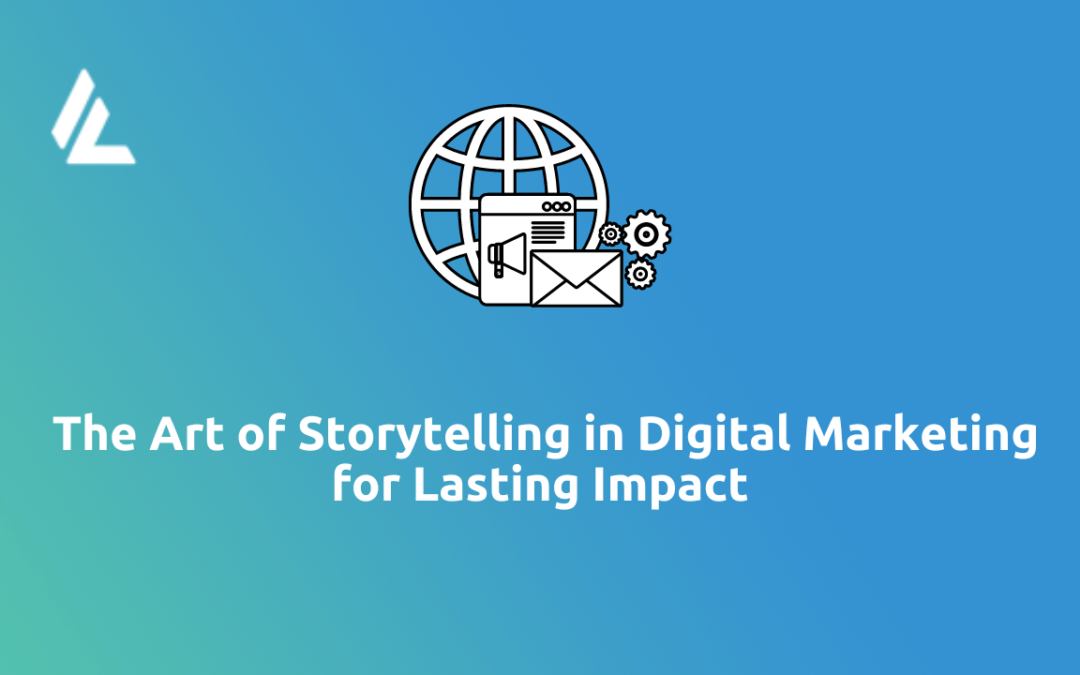Table of Contents
In the ever-evolving landscape of digital marketing, brands are constantly seeking innovative ways to capture the attention of their target audience. Amidst the noise and clutter, one approach has proven to be particularly effective in cutting through the digital noise – storytelling. By leveraging the power of narratives, digital marketers can create compelling and engaging content that resonates with their audience, leaving a lasting impact. In this blog, we will explore the art of storytelling in digital marketing and how crafting compelling narratives can elevate your brand’s online presence.
The Power of Storytelling in Digital Marketing:
Storytelling is an age-old art form that can captivate and engage people. In the context of digital marketing, storytelling serves as a powerful tool to humanize brands and connect with customers on a deeper emotional level. By weaving narratives into their marketing campaigns, brands can create a sense of authenticity, trust, and relatability. Stories can evoke emotions, inspire action, and leave a lasting impression on the audience.
In the digital age, attention spans are shorter than ever, and consumers are constantly bombarded with advertisements and promotional messages. To break through this noise, brands must find unique ways to capture their audience’s attention. Storytelling provides an opportunity to create a memorable and impactful brand narrative that stands out from the competition.
Elements of a Compelling Narrative:
Crafting a compelling narrative requires careful consideration of various elements. Here are a few key components to keep in mind:
a. Character Development: Introduce relatable and memorable characters that resonate with your target audience. These characters could be fictional or real-life individuals who have experienced positive outcomes from your brand’s products or services. By showcasing the transformation and growth of these characters, you can create a compelling storyline that keeps the audience engaged.
b. Conflict and Resolution: Every good story has conflict and resolution. Identify the challenges or pain points your audience faces and showcase how your brand can provide a solution. This creates a compelling storyline that keeps the audience engaged. By highlighting the obstacles faced by your characters and demonstrating how your brand helps overcome them, you can create a sense of anticipation and satisfaction for the audience.
c. Authenticity: Authenticity is crucial for building trust. Share real-life experiences, testimonials, and success stories that showcase the genuine impact your brand has had on customers’ lives. By presenting authentic stories, you can establish a genuine connection with your audience and foster long-term loyalty.
d. Emotional Appeal: Tap into emotions by using storytelling techniques such as humor, empathy, or inspiration. Emotionally resonant stories have a higher chance of creating a lasting impact on the audience. By creating an emotional connection, you can evoke empathy and make your brand more memorable.
Storytelling in Digital Marketing: Best Practices
To effectively incorporate storytelling into your digital marketing strategy, consider the following best practices:
a. Understand Your Audience: Develop a deep understanding of your target audience’s preferences, interests, and pain points. This knowledge will help you tailor your narratives to meet their needs and desires. Understanding their motivations and aspirations allows you to create narratives that truly speak to them.
b. Choose the Right Medium: Different mediums have varying strengths when it comes to storytelling. Whether it’s through videos, blog posts, social media posts, or interactive content, select the medium that aligns best with your brand’s message and target audience. For example, videos can be a powerful medium for visually engaging storytelling, while blog posts allow for more in-depth narratives.
c. Consistency: Maintain consistency in your storytelling across different marketing channels. This ensures a cohesive brand narrative and helps build brand recognition. Consistency in tone, messaging, and visual elements creates a seamless storytelling experience for your audience, regardless of where they encounter your brand.
d. Incorporate User-Generated Content: Encourage your audience to share their stories and experiences with your brand. User-generated content adds credibility and authenticity to your storytelling efforts. It also fosters a sense of community and engagement, as customers become active participants in your brand’s narrative.

Storytelling in Digital Marketing: The Indian Context:
Digital marketing in India has witnessed tremendous growth in recent years. With a diverse population and a rapidly expanding digital landscape, storytelling plays a crucial role in capturing the attention of the Indian audience. Indian consumers resonate with narratives that reflect their cultural values, traditions, and aspirations. Incorporating elements of Indian culture and local nuances into your storytelling can help establish a strong connection with the Indian audience.
India is a land of diverse cultures, languages, and traditions. By understanding the regional nuances and cultural sensitivities of different states and communities, brands can tailor their storytelling to resonate with specific segments of the Indian market. From heartwarming tales of social change to humorous narratives that resonate with the Indian youth, storytelling can effectively tap into the rich tapestry of Indian culture and create meaningful connections with the audience.
Success Stories: Brands Mastering Storytelling in Digital Marketing:
Several Indian brands have successfully embraced storytelling in their digital marketing strategies. These brands have recognized the power of narratives and have crafted compelling stories that resonate with their target audience. By showcasing authentic experiences, emotional journeys, and relatable characters, these brands have managed to capture the attention and loyalty of their customers.
For example, Amul, one of India’s most iconic dairy brands, has been masterful in incorporating storytelling into its digital marketing. Through its creative and witty advertisements, Amul has managed to connect with the Indian audience on a deep cultural level, making its brand synonymous with social commentary and entertainment.
Another success story is that of Tata Tea’s “Jaago Re” campaign. By addressing social issues and encouraging civic engagement, Tata Tea has not only created a powerful brand narrative but also contributed to positive social change. The campaign’s storytelling approach has resonated strongly with Indian consumers, making Tata Tea a leader in its category.
Conclusion:
The art of storytelling in digital marketing is a powerful technique that allows brands to create compelling narratives, connect with their audience on an emotional level, and stand out in the crowded digital landscape. By incorporating elements such as character development, conflict and resolution, authenticity, and emotional appeal, brands can craft narratives that leave a lasting impact on their target audience.
In the context of digital marketing in India, storytelling takes on a unique dimension. By understanding the cultural values and aspirations of the Indian audience, brands can create narratives that resonate deeply with their target market. Leveraging local nuances and incorporating elements of Indian culture can help establish a strong connection with the Indian audience, resulting in increased brand loyalty and engagement.
As digital marketing continues to evolve, storytelling remains a timeless and effective tool for brands to create meaningful connections with their audience. By mastering the art of storytelling and embracing its potential, brands can elevate their digital marketing strategies, engage their audience, and leave a lasting impression in the minds and hearts of their customers.

